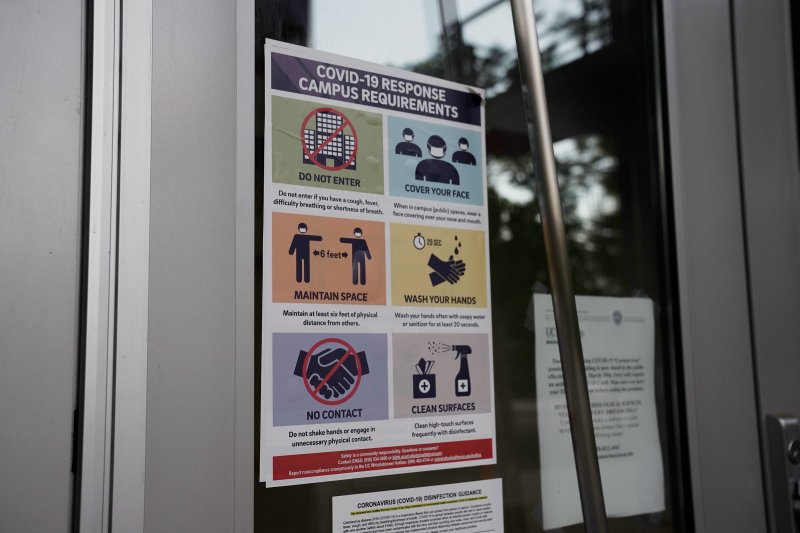
China Is Done Biding Its Time The End of Beijing’s Foreign Policy Restraint? .......... as COVID-19 has ravaged the globe, Chinese President Xi Jinping has appeared to defy many of his country’s long-held foreign policy principles all at once. ........... It has tightened its grip over Hong Kong, ratcheted up tensions in the South China Sea, unleashed a diplomatic pressure campaign against Australia, used fatal force in a border dispute with India, and grown more vocal in its criticism of Western liberal democracies. ........... The world may be getting a first sense of what a truly assertive Chinese foreign policy looks like. ........... “If someone claims that China’s exports are toxic, then stop wearing China-made masks and protective gowns, or using China-exported ventilators,” a foreign ministry spokesperson tweeted after China was found to have delivered substandard medical supplies to several European countries. ........... Over the past few months, it has upped the ante in nearly all of its many territorial disputes and even provoked new ones, in another departure from past practice. ............ Since March, China has stepped up its patrols near the Diaoyu Islands (known in Japan as the Senkaku Islands) in the East China Sea and doubled down on its maritime claims in the South China Sea, sending vessels to linger off the coasts of Indonesia, Malaysia, and Vietnam. It has conducted aerial reconnaissance near Taiwan, effectively ended Hong Kong’s semiautonomous status, ginned up a new border dispute with Bhutan, and by all appearances, provoked a deadly border clash with India in what was the People’s Liberation Army’s first use of force abroad in 30 years. Any one of these moves by Beijing might have been unsurprising on its own. Put together, however, they amount to a highly unusual full-court press. ............... In the western province of Xinjiang, a government crackdown on the Muslim Uighur minority, initiated before the pandemic hit, has since turned into a campaign of ethnic cleansing. Meanwhile, a controversial new national security law has all but stripped Hong Kong of its unique legal status. The law contains provisions that could potentially transcend national boundaries and extend Chinese jurisprudence globally, marking a shift from China’s traditionally defensive conception of sovereignty to a more offensive approach to extend Beijing’s authority. ................ in June, the National People’s Congress announced its sweeping new national security law for Hong Kong. But the global chorus of condemnation that followed the announcement did not keep the CCP from implementing the new law with zeal ............ In this new Chinese foreign policy, there are few U-turns and no posted speed limits. ........... Xi is rumored to be making many of the most important decisions himself, without even a trusted cohort of advisers. This may help explain why China’s foreign policy has become less risk averse: with fewer voices pitching in, an undaunted Xi may have no one to dissuade him from pressing ahead. ........ Xi is taking advantage of the United States’ stunning abdication of global leadership in a moment of crisis to advance his interests on many fronts. His imperious coronavirus diplomacy is just the latest instance of China’s long-standing tradition of foreign policy opportunism and improvisation—only scaled up to fit the gaping hole left by the United States. ............... his belief that China’s geopolitical moment has arrived. ........... Familiar or not, Beijing’s bristling crisis diplomacy is costing it in novel and lasting ways. .......... By leaving a power vacuum in the world’s darkest hour, the United States has bequeathed China ample room to overreach—and to demonstrate that it is unqualified for a position of sole global leadership. If Washington does not return soon, however, it may not much matter how the world views China’s bumptious diplomacy—left with no alternative, strident excess will fill the void.
The world loves the US dollar. Trump and the pandemic could change that "We expect the US dollar to follow a path of reduced dominance and weaken over the long term" .......... As US caseloads spiral out of control, many states are reimposing strict lockdown measures, threatening the fragile recovery that started in April. In California, which boasts the fifth largest economy in the world, Gov. Gavin Newsom on Monday shut indoor seating at restaurants, movie theaters, zoos, museums and bars. At least 27 states have now put a hold on reopening businesses or reimposed measures aimed at slowing the spread of the virus. "The US has reopened too early, as you can see" ............. The US government is ramping up borrowing to fund massive stimulus programs to prop up the economy. ........ Other developed economies are borrowing way more, too. But in the United States, the government is issuing debt faster than the Federal Reserve is buying it. That means there are more US Treasuries in the market, which hangs over the value of the dollar ............. There are reasons to be cautious. The decline of the US dollar has been predicted on many occasions, and it's always been premature. ........ the dollar could lose up to 20% of its value over the next five years. ....... China, where the desire to increase global use of the renminbi is strong.
Is Moderna Close to Winning the Coronavirus Vaccine Race? Moderna’s phase 1 data looks positive, but the company’s investigational coronavirus vaccine has a lot more to prove in late-stage trials.
I'm happy this little-known data scientist helped make a difference! 😊https://t.co/UHXEdtB8qg pic.twitter.com/b4PInQIhLr
— Jeremy Howard (@jeremyphoward) July 18, 2020
It was.
— Hillary Clinton (@HillaryClinton) July 17, 2020
See: The last four years. https://t.co/haAQIYkBq6
